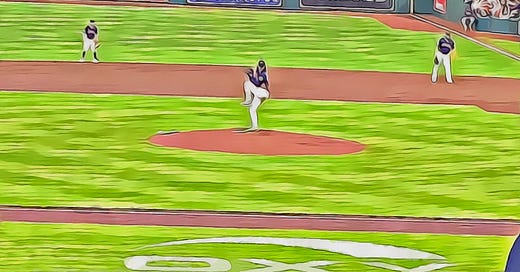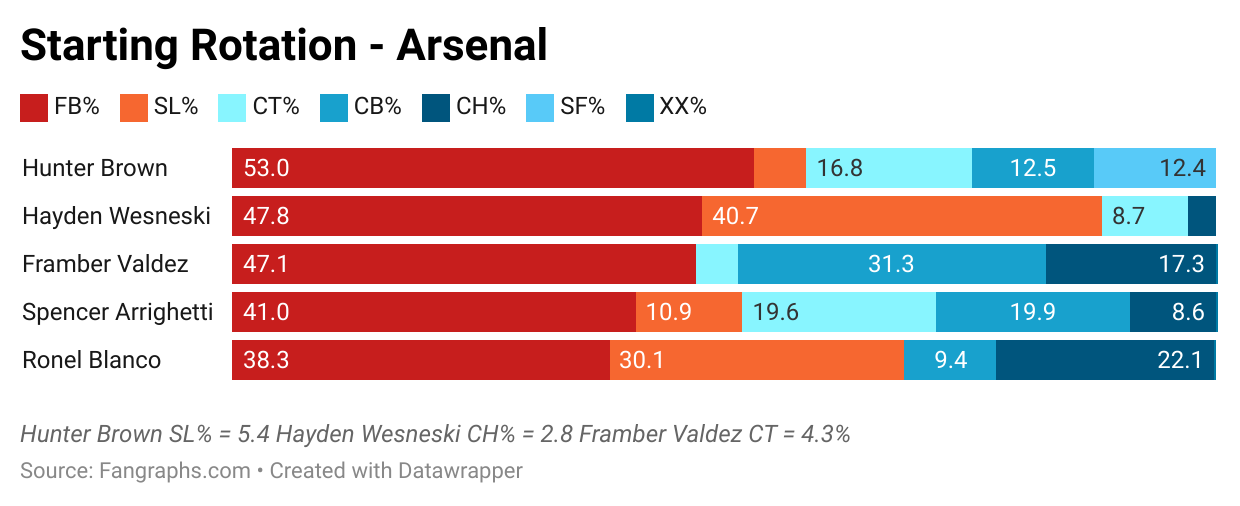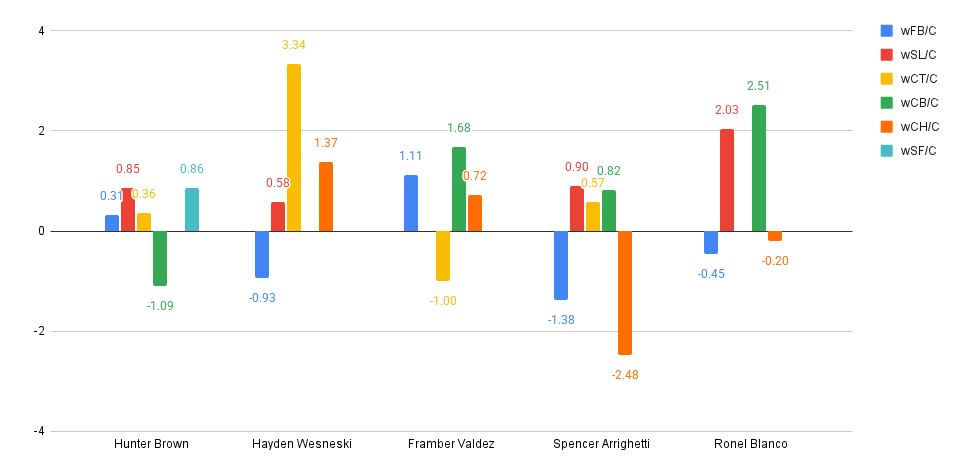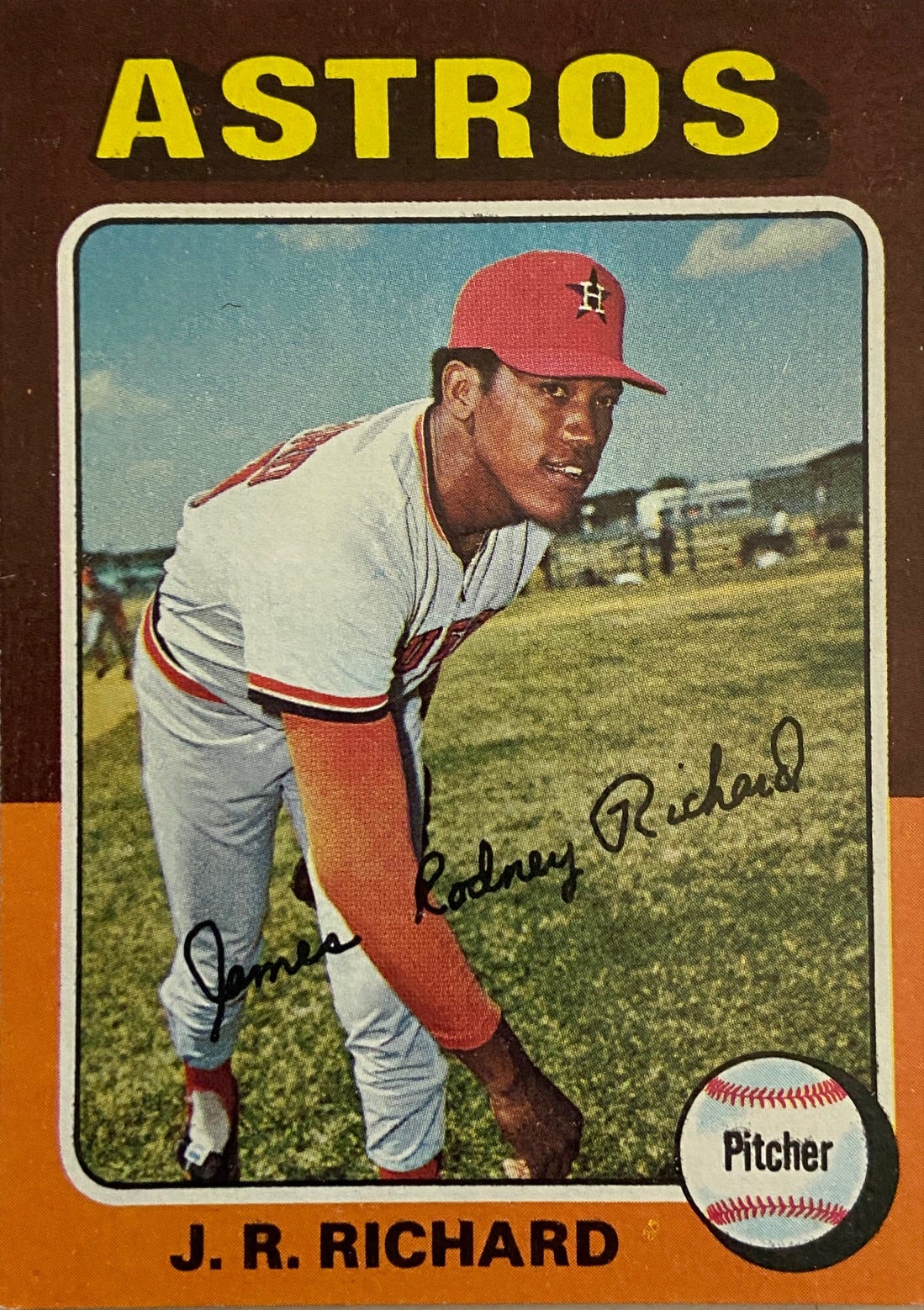Rotation Arsenal: Letting the Data Drive
Did the Astros steal another "throw-in" in the Kyle Tucker trade?
Have you ever started writing and the result was something different than what you originally had in mind?
Maybe it was a term paper, essay or a love letter to Cindy Martin in the 7th grade?
Whatever happened to Cindy?
I didn't have anything specific in mind when I started this; I just knew I wanted to write about the rotation.
So, I gathered the data and let it point me in the direction to travel.
What a trip. The ones you don’t plan often turn out to be the best and most eventful.
I haven’t tracked or followed much of the pitch modeling metrics over the years, but hope to do so more this season as the rotation adjusts to the new reality of no Verlander or Kikuchi and likely no Framber next season.
I put Wesneski in as the fifth starter because that’s what FanGraphs currently shows and I’m rolling with it to keep things less busy and complicated.
That and well, it worked out really well for this post, as I’m learning along with you on what pitches work for what pitchers.
Who Throws What?
Key:
FB = Fastball SL = Slider CT = Cutter CB = Curve Ball CH = Changeup SF = Split Finger and XX = Unknown
Speaking of Wesneski, he relies on two pitches for almost 90% of his pitches, which may work coming out of the bullpen, but is less likely to do so as a starter, when you theoretically face the lineup more than once.
Here’s the thing, Wesneski’s third pitch - a cutter - was the best pitch per 100 of any pitch of any Astros starter - better than Framber’s sinker or curve and better than Blanco’s slider.
And what’s that? His changeup is a little-used pitch, but has been good, too?
Somebody did their homework before the Tucker trade.
I’m getting ahead of myself. First let’s check into the success, or lack thereof, of each pitch as that’s more interesting than the percentages of the various types of pitches.
Then we’ll get back to Wesneski’s cutter. I promise.
These are the run values for each pitch from FanGraphs.
Only two of the five have positive run values on their fastballs, with Framber dominating with his sinking fastball.
You’re probably saying, wait, doesn’t Framber have a devastating curveball? Why, yes he does as we’ll see shortly.
The slider is Ronel’s money pitch, quite literally.
The cutter has shown moderate success for Brown and Arrighetti and hey, there’s our friend, Hayden, leading the way on the cutter. Like your high school history teacher I’m going to hint that you may want to remember this for later. Like a couple paragraphs later.
Framber’s second dominating pitch is the curve, which comes in just above the fastball in runs above average for Valdez.
The changeup has also been problematic for Arrighetti.
Hunter Brown is the only starter to throw a split-finger.
From Raw to Refined - One Pitch Stands Out
Raw numbers are cool, but let’s normalize each pitch to runs above average per 100 pitches to level it up.
When we do that one pitch stands far and away above the others - and it’s not Framber’s sinker or Blanco’s slider.
That 3.34 runs per 100 cutters, places Wesneski tied for 12th in all of baseball in that category (with Kaleb Ort, no less).
The changeup was good, too, though 1.37 places him 61st in MLB for 2024, it’s better than anyone else in the rotation by a mile.
Pair two good pitches with Wesneski’s ability to locate and we’re getting a picture of why the Astros believe he can be an effective starter.
But here’s the question…these aren’t the pitches Wesneski was throwing in Chicago. Why?
Will he throw more of them in Houston? Will they continue to be as effective if used more often?
Deja Vu All Over Again?
In July 2021, in an effort to strengthen their bullpen down the stretch the Astros traded Myles Straw to Cleveland for Phil Maton and a catcher with the Low-A East League’s Lynchburg Hillcats who was largely seen as a “throw-in” at the time.
“Phil Maton and a low-level minor leaguer” was how many framed it and many Houston fans hated it.
That low-level minor leaguer was Yainer Diaz and he would debut in Houston in late 2022 and is now a fixture in the middle of the Astros lineup.
Make no mistake, the prize of the Tucker trade was and is Cam Smith and Smith’s results will ultimately be how this trade is judged by history.
That doesn’t mean Dana Brown’s crew didn’t entice the Cubs to throw in someone who hadn’t reached his potential in Chicago, someone who could provide more immediate returns in Houston.
It’s still all theory. Wesneski has to go out and prove it on the mound. Maybe he does or maybe he flops, that’s baseball.
It’s also a reminder that there’s generally a method to the madness of the front office, whether we see it or not.
“He traded Kyle Tucker for Isaac Paredes, a guy with 19 at-bats above A ball and a journeyman pitcher?”
Maybe.
Maybe not.
Thanks for reading!














Great article with depth of research! Thanks for the insight on this one